How to Prevent the Tongue of Your Child’s Shoes from Sliding – Works for Shoes with Laces or Velcro!
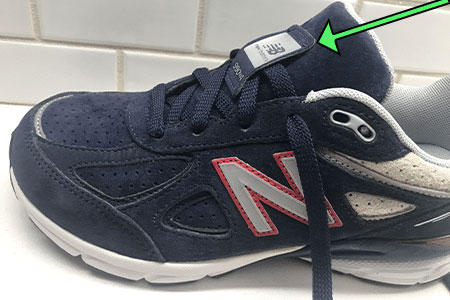
Is your child complaining that the tongue of the shoe keeps sliding to the sides? Any movement within your child’s shoe can cause discomfort and might lead to your child refusing to wear the shoes. Let me show you how to prevent the tongue of your child’s shoes from sliding.
Is Your Child Wearing the Correct Shoe Size?
There could be several reasons why the tongue of your child’s shoe keeps sliding to the side, but the most common one is from wearing shoes that are too big or too wide. Before I show my hack to prevent the tongue of the shoe from sliding, I want to make sure that your child’s shoes are the correct size. If your kids’ shoes are too big, too wide, or if the shoes once fit but have stretched out over time, it could explain why the tongue keeps sliding.
Since most children’s shoe stores are closed now, so I created a virtual shoe fitting service that will help you retrieve your child’s shoe size from home. You will be able to determine your child’s exact foot length and shape (narrow, medium, wide, extra wide) and whether the child has a high instep or not.
If you are positive that your child is wearing the correct shoe size then let’s take a look at how to prevent the tongue of your child’s shoe from sliding to the sides.
How to Prevent the Tongue of Your Child’s Shoes from Sliding
SCENARIO # 1
Assuming that your child is wearing shoes with shoelaces instead of velcro or an alternative closure, check if the shoes have a loop in the tongue. We can take advantage of that loop and put the laces through to hold the tongue steady. Follow these 4 simple steps:
1️⃣ Start by lacing the shoes normally with a crisscross:
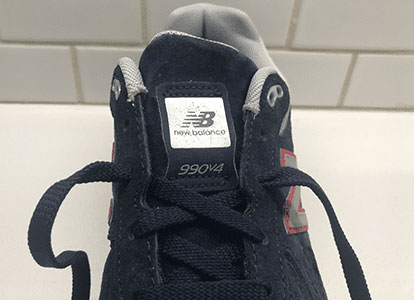
2️⃣ Put the lace through the loop and come back to the same side:

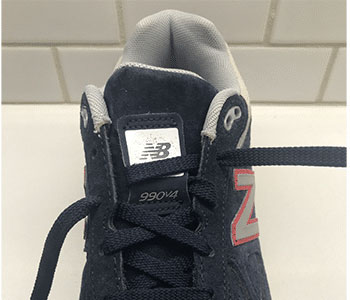
3️⃣ Repeat the same process with the opposite side of the shoe:
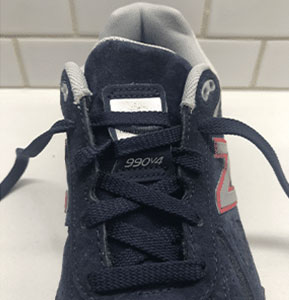
4️⃣ Continue lacing the shoes normally:
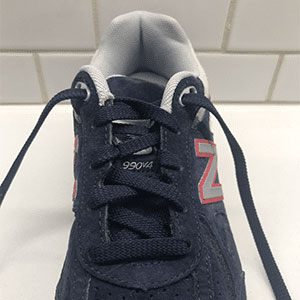
Now the tongue has very little room to move at all!
SCENARIO # 2
Some shoes don’t have that loop on the tongue that you can lace through to keep the tongue in place. In this case, I suggest that you try a specific shoe lacing technique that my coworker who has over 30 years of shoe fitting experience taught to me. This shoe lacing technique helps prevent tongue movement within your shoe.
1️⃣ Start by lacing the shoes normally with a crisscross but leave the top two eyelets unlaced:
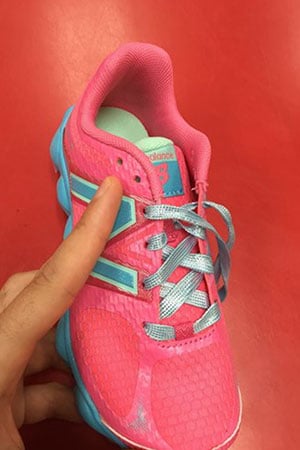
2️⃣ Go through the top eyelet first:
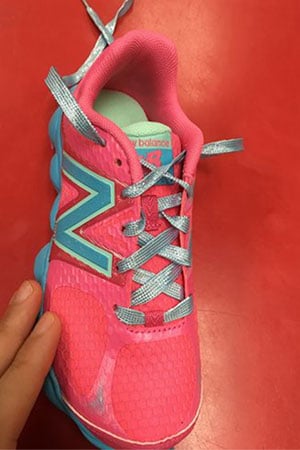
3️⃣ Come back to the eyelet that you left open:
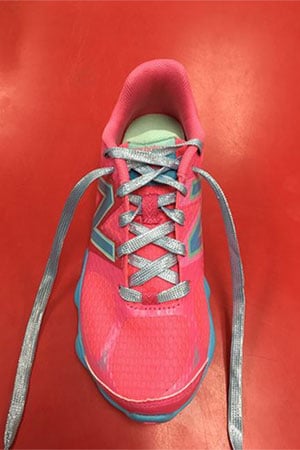
This shoe lacing technique puts extra pressure on the tongue of the shoes, preventing the tongue from sliding.
SCENARIO # 3
Your child is wearing shoes with velcro or an alternative closure instead of shoelaces. Start by making sure that your child is pulling the velcro straps comfortably tight.
In this particular case I suggest that you fit a tongue pad inside your kids’ shoes:
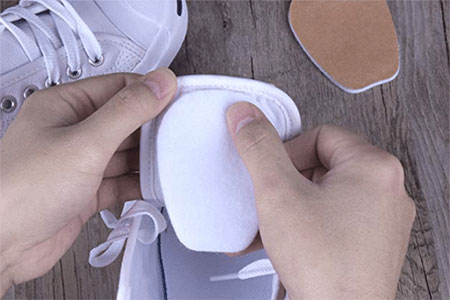
This will help prevent the tongue of your child’s shoes from moving excessively. A tongue is simply an adhesive-backed pad that is easy to fit and remove in case your child doesn’t like how it feels. You can find tongue pads on Amazon or at your local shoe store:
Please follow the instructions below to order your child the correct tongue pad size:
- The small size fits kids’ shoe sizes 8 to 10 1/2.
- The medium size fits kids’ shoe sizes 10 1/2 to 3.
- The large size for kids’ fits shoe sizes 3 to 7.
- The extra large is for children that are wearing adult shoe sizes 71/2 and above.
If after trying my shoe lacing techniques or placing a tongue pad inside your kids’ shoes your child still complains about the tongue sliding to the sides of the shoes, I strongly suggest that you make sure your child is wearing the correct shoe size. Feel free to reach out to me if you have any further questions:
fitingchildrensshoes@gmail.com
Remember that some of the most common reasons why the tongue of the shoe slides is from wearing shoes that are too big, too wide, or your child is not pulling the laces or the velcro straps tight enough.

